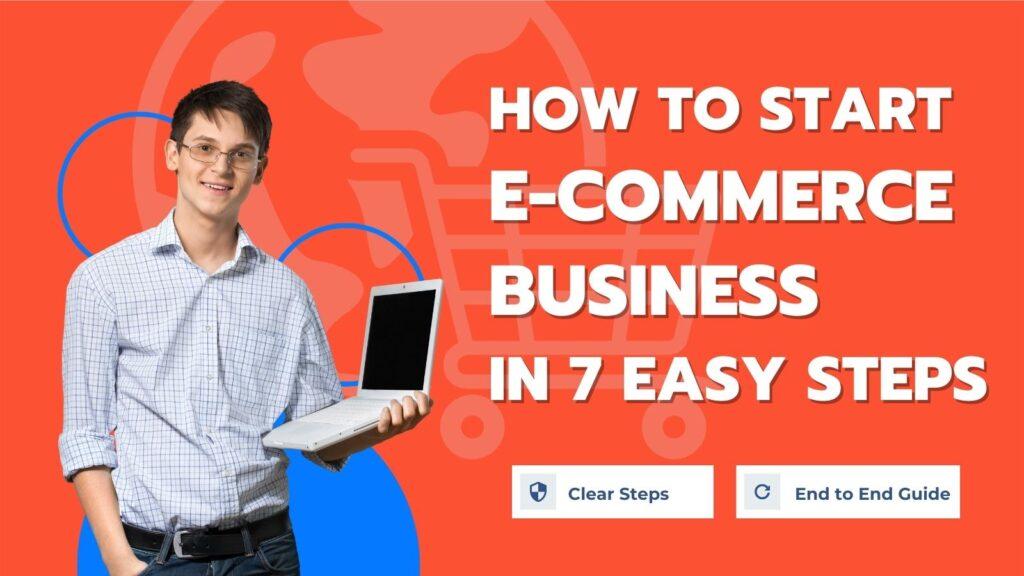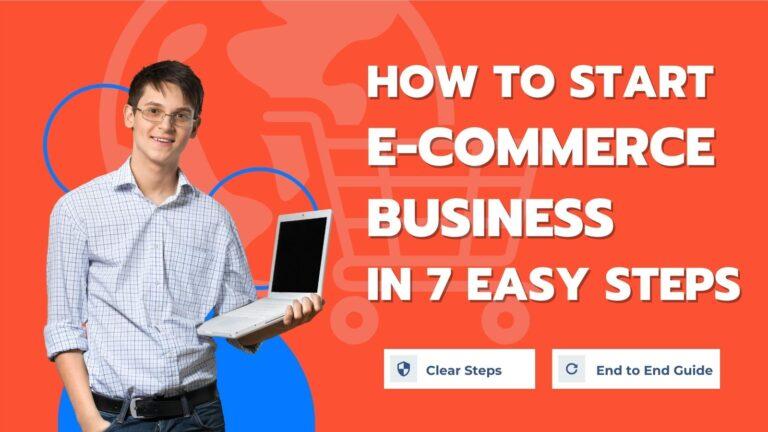The majority of the world’s population now functions at its best with the aid of technology and its benefits. The 21st century didn’t come with only better fashion trends but also with an improved level of technology which has been most importantly helpful to business owners.
E-commerce is basically the act of buying and selling or provision of services through the aid of the internet — it is conducted online.
Business owners can now work remotely with the help of E-commerce which comes with interesting perks like around-the-clock availability.
Have you been thinking of taking a break or closing your store because it’s tasking to drag yourself there every day but you’re still interested in continuing your business or you’re a newbie that just wants to start your business and you don’t want the physical aspect? E-commerce would definitely be a good step for you and these easy steps can help you achieve your goal.

Step 1: Finding the right product and sourcing for it
This might be a bit stressful at first but it’s really as simple as possible. The first thing you should think about is what you’re good with, the type of things you take interest in, the ones you can easily write about or pitch to your audience without so much stress. After this, you should have an idea about two or three things you can decide to venture into — meaning you have jumped your first hurdle.
The next thing is to think about how to source for the product you decided to pick, like how and where to purchase it without having to break the bank or losing your night’s sleep.
Step 2: Making research and setting up a plan
This second step might be tricky and tasking because it may discourage you but you don’t want to be discouraged when you have a goal to reach. It entails conducting a series of research to know where your strength lies and to create a better and strategic approach for your business.
Competitions are everywhere, they can’t be avoided but they definitely can be managed — the best way to manage competition in business is to make your product or services unique and you’ll surely get your own audience.
This second step also involves setting up a plan — your plan simply depicts the ways you’ll go about your business, evaluating new ideas, how to handle certain challenges and customers and how to move up the ladder.
Step 3: Crafting the perfect brand

The niche you’ve decided to pick comes with its duties and you should be willing to put in real work to craft a perfect outlook for it.
After picking a particular product, you still have the duty of thinking of a business name ideas and creating a logo that stands out and gives a hint about the product you plan to sell or the services you’re planning to offer.
You shouldn’t deliberate too much on different names, so you don’t end up going with a mediocre one. Write down about 3 or 4 names depending on your choice and pick the one that is most pleasing to the ears. Yes, the most pleasing to the ears because if it makes you feel that way, it sure will make others feel that way too — even if it’s not everybody, at least you will get a better percentage of your target audience.
You might not be able to help yourself concerning the logo creation if you’re not into graphic design, so you’d need to employ the services of one — but you can still draw something up, a sketchy image of how you’d want your logo to be and that can give your graphic designer a better pictorial representation of his job.
Step 4: Decision on how you want to operate
This is a very easy step in this process. It’s basically the way of managing how you want to operate your business. You need a space to keep your product if you plan to be involved in an on-shelf and off-shelf business.
If you’re not a fan of making your house a warehouse for your product, you will need a space that can accommodate your product.
If your budget is not broad enough to rent a space, you can easily use your garage or your backyard.
If your decision is to be a full E-commerce trader that doesn’t want to take part in the physical aspect at all, you’d have trusted suppliers and delivery companies — so it goes straight from the company you purchase them from, to your customers.
Step 5: Business Setup

Your E-commerce business setup involves the use of a website which creates an online appearance for your business and how your customers can easily reach out for your product or services.
If you’re good with website creation, you can do it yourself but if it’s not your thing, you should employ a professional to get a better result.
You should let the website creator know what’s on your mind, how you want your customers to reach you whether through a specific mail address for the business or a certain phone number, the column where they can pick their choice from a variety of options, how to make enquiries, method of payment and even an opportunity to drop reviews.
Also, social media has helped businesses grow from scratch to a higher level. You should create a business account on different social media apps. This will boost your business’s online activity which will create a better and larger audience.
Step 6: Preparing to launch
You must have put in much work when you get to this stage and you’re about to be done with the tough aspects. When you’re preparing to launch your new business, you must have been gathering your audience by creating an online presence and giving them teasers.
A photo shoot of the product can be done using your phone or if you’d like to employ a photographer, an accumulation of videos can also be made to give a better pictorial understanding. This should be posted frequently on the website you’ve created and your business’s social media pages.
The teasers you create and post online have importance and it’s giving them something to look forward to. Giving your audience something to look forward to might be as simple as selling at discounted prices or promising to give out 1 or 2 products on the launch date and post each day to countdown to the date.
You can also promote your business through bigger channels like influencers. This gives your E-commerce business a good start up and better audience coverage.
Step 7: Launch

This is when you’re finally done with the plans and processes, you’re ready to prove to the world that your product or services are different and unique from your competitors’ own. You have identified your target market, created an online presence and set measurable goals — you should pick a date after knowing nothing major that can shift people’s minds is not happening that day.
This will give you the full attention of your audience and create a free space for your product to receive media attention.
Creating a business is not as easy as it sounds and it may get you worked up sometimes but these steps will put you on the right path and help you overcome your E-commerce business fear.




